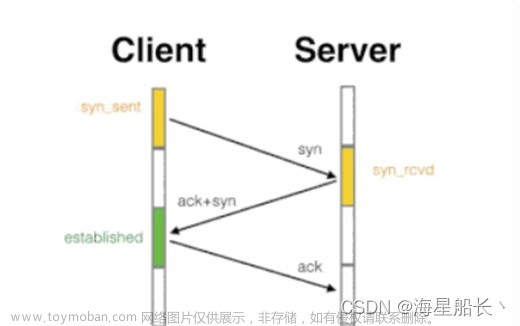Netty是一个基于Java NIO实现的网络通信框架,提供了高性能、低延迟的网络通信能力。使用Netty构建TCP和UDP服务器和客户端非常简单,下面是一个简单的示例代码:
- 构建TCP服务器
public class TcpServer { private final int port; public TcpServer(int port) { this.port = port; } public void start() throws Exception { EventLoopGroup group = new NioEventLoopGroup(); try { ServerBootstrap b = new ServerBootstrap(); b.group(group) .channel(NioServerSocketChannel.class) .localAddress(new InetSocketAddress(port)) .childHandler(new ChannelInitializer<SocketChannel>() { @Override public void initChannel(SocketChannel ch) throws Exception { ch.pipeline().addLast(new TcpServerHandler()); } }); ChannelFuture f = b.bind().sync(); f.channel().closeFuture().sync(); } finally { group.shutdownGracefully().sync(); } } public static void main(String[] args) throws Exception { new TcpServer(8080).start(); } } - 构建TCP客户端
public class TcpClient { private final String host; private final int port; public TcpClient(String host, int port) { this.host = host; this.port = port; } public void start() throws Exception { EventLoopGroup group = new NioEventLoopGroup(); try { Bootstrap b = new Bootstrap(); b.group(group) .channel(NioSocketChannel.class) .remoteAddress(new InetSocketAddress(host, port)) .handler(new ChannelInitializer<SocketChannel>() { @Override public void initChannel(SocketChannel ch) throws Exception { ch.pipeline().addLast(new TcpClientHandler()); } }); ChannelFuture f = b.connect().sync(); f.channel().closeFuture().sync(); } finally { group.shutdownGracefully().sync(); } } public static void main(String[] args) throws Exception { new TcpClient("localhost", 8080).start(); } } - 构建UDP服务器
public class UdpServer { private final int port; public UdpServer(int port) { this.port = port; } public void start() throws Exception { EventLoopGroup group = new NioEventLoopGroup(); try { Bootstrap b = new Bootstrap(); b.group(group) .channel(NioDatagramChannel.class) .option(ChannelOption.SO_BROADCAST, true) .handler(new ChannelInitializer<DatagramChannel>() { @Override public void initChannel(DatagramChannel ch) throws Exception { ch.pipeline().addLast(new UdpServerHandler()); } }); ChannelFuture f = b.bind(port).sync(); f.channel().closeFuture().sync(); } finally { group.shutdownGracefully().sync(); } } public static void main(String[] args) throws Exception { new UdpServer(8080).start(); } } - 构建UDP客户端
public class UdpClient { private final String host; private final int port; public UdpClient(String host, int port) { this.host = host; this.port = port; } public void start() throws Exception { EventLoopGroup group = new NioEventLoopGroup(); try { Bootstrap b = new Bootstrap(); b.group(group) .channel(NioDatagramChannel.class) .handler(new ChannelInitializer<DatagramChannel>() { @Override public void initChannel(DatagramChannel ch) throws Exception { ch.pipeline().addLast(new UdpClientHandler()); } }); ChannelFuture f = b.bind(0).sync(); DatagramPacket packet = new DatagramPacket( Unpooled.copiedBuffer("Hello", CharsetUtil.UTF_8), new InetSocketAddress(host, port)); f.channel().writeAndFlush(packet).sync(); if (!f.channel().closeFuture().await(5000)) { System.err.println("Udp client write timeout"); } } finally { group.shutdownGracefully().sync(); } } public static void main(String[] args) throws Exception { new UdpClient("localhost", 8080).start(); }上述示例代码中,分别定义了一个TCP服务器、TCP客户端、UDP服务器和UDP客户端,并使用了Netty提供的NIO事件循环组(EventLoopGroup)、服务器/客户端启动器(ServerBootstrap/Bootstrap)和通道初始化器(ChannelInitializer)等组件,以实现服务器和客户端的建立、连接、数据读写等功能。
在构建服务器和客户端时,可以通过设置通道选项(ChannelOption)和编解码器(Codec)等方式进行更加细粒度的控制和扩展。同时,Netty还提供了丰富的工具和插件,如性能监控器(Metric)和日志框架(Logging),可以用于监测和调试应用程序的运行状态和性能瓶颈。文章来源:https://www.toymoban.com/news/detail-568035.html
总之,使用Netty构建TCP和UDP服务器和客户端,可以帮助开发人员快速构建高性能、可扩展的网络应用程序,并通过其丰富的功能和插件实现更加细粒度的控制和调试。文章来源地址https://www.toymoban.com/news/detail-568035.html
到了这里,关于使用Netty构建TCP和UDP服务器和客户端的文章就介绍完了。如果您还想了解更多内容,请在右上角搜索TOY模板网以前的文章或继续浏览下面的相关文章,希望大家以后多多支持TOY模板网!












